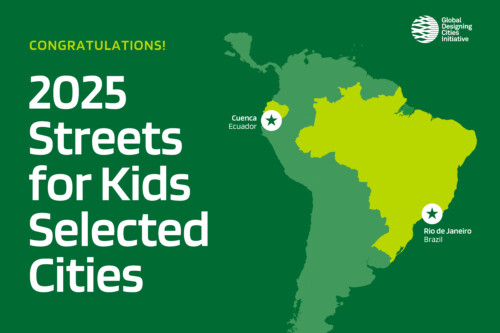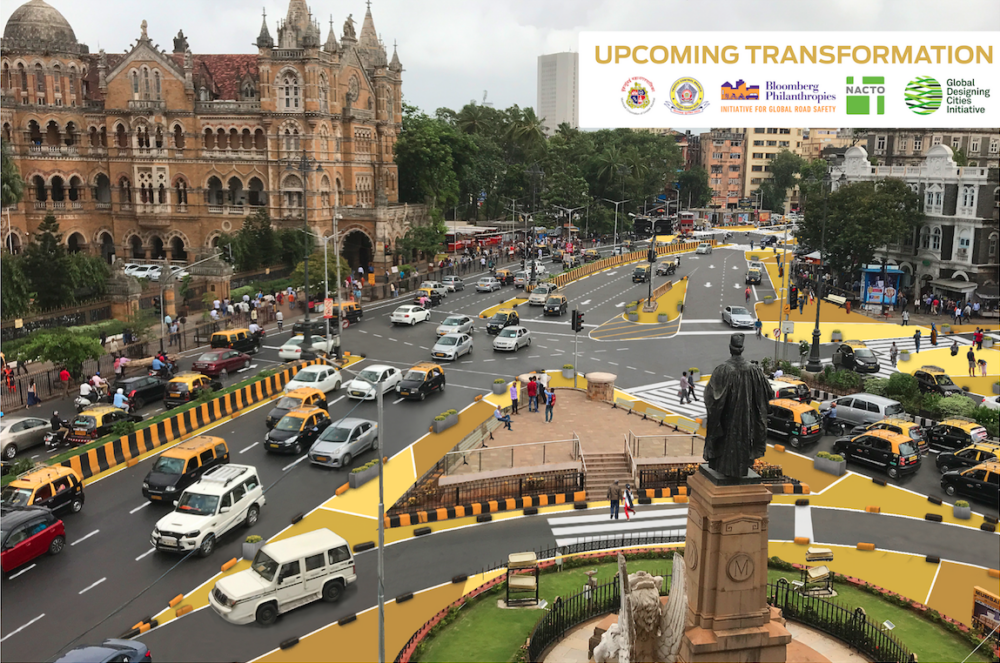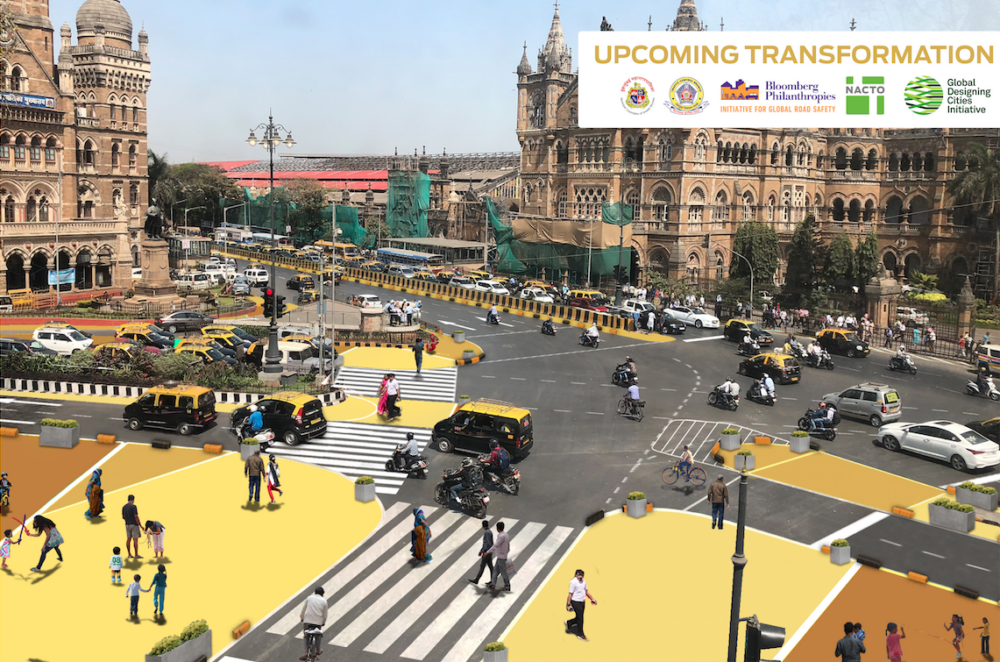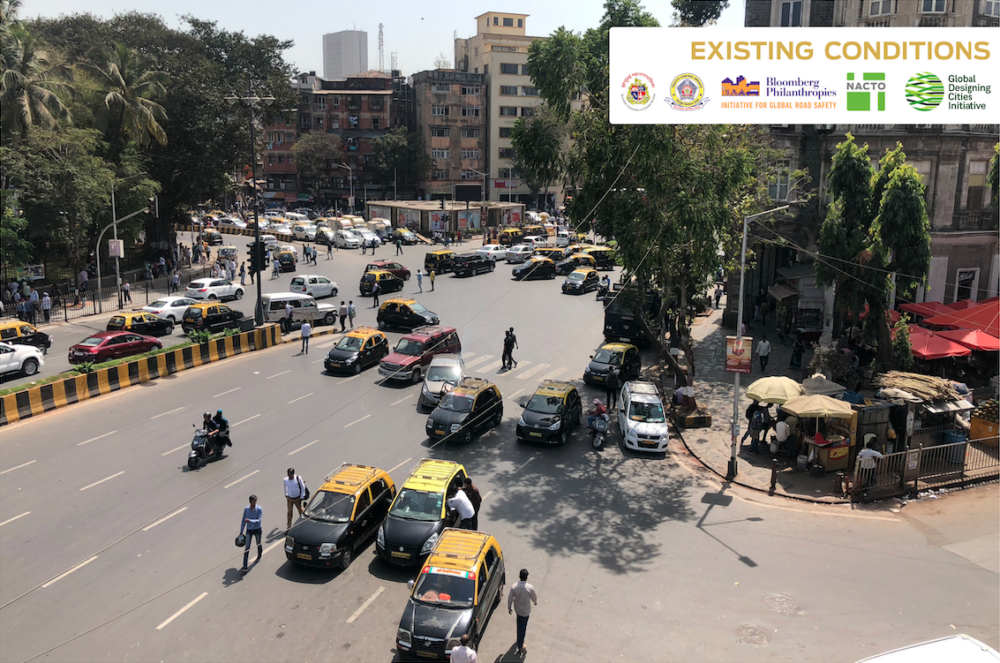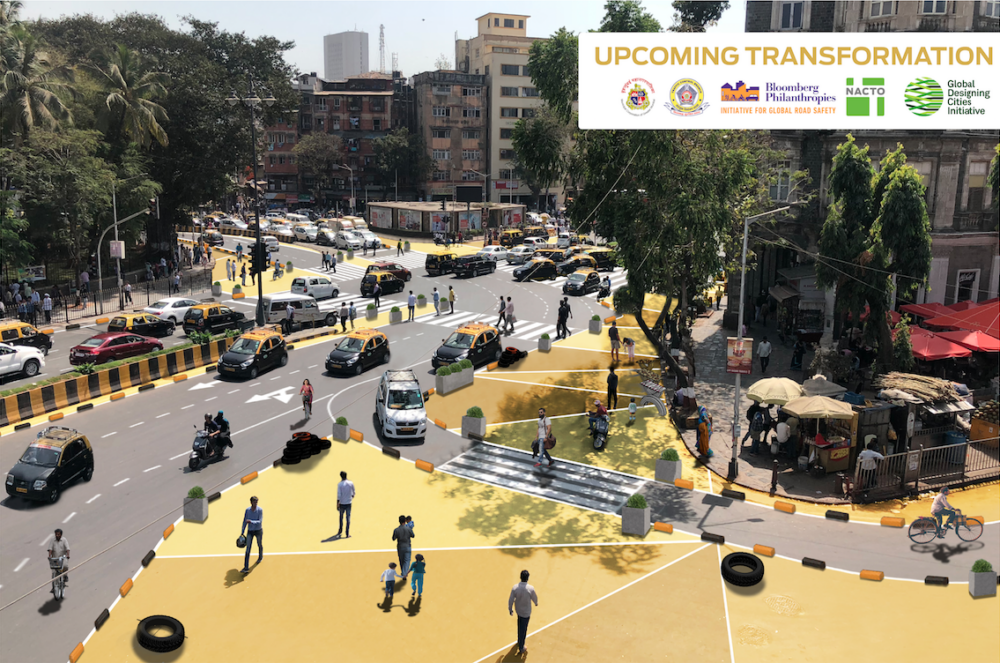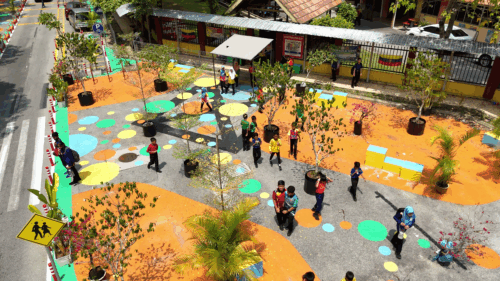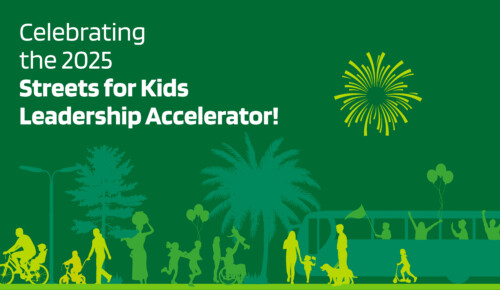22 October, 2019: The Municipal Corporation of Greater Mumbai (MCGM) in collaboration with the Bloomberg Philanthropies Initiative for Global Road Safety (BIGRS) this morning began the interim transformation at the Chhatrapati Shivaji Maharaj Terminus (CSMT) intersection. Under BIGRS, the MCGM and Mumbai Traffic Control Branch (MTCB), with the support of the National Association of City Transportation Officials – Global Designing Cities Initiative (NACTO – GDCI), is carrying out this transformation work to increase pedestrian safety while making traffic flow more efficient, around the busy transportation hub.
This transformation is part of the ongoing effort by the MCGM and MTCB, under BIGRS, to reduce road crashes, injuries and deaths. BIGRS was initiated in 2015 after an MoU was signed between the Government of Maharashtra and Bloomberg Philanthropies. Since then, there has been a 22% reduction in road crash deaths.
The transformation was announced in November 2018, when Janette Sadik-Khan, Principal, Bloomberg Associates, and former Commissioner at New York City Department of Transportation, visited Mumbai and the MCGM endorsed the Global Street Design Guide (GSDG). Using guidelines from the GSDG and several rounds of on-site traffic study and data collection, NACTO-GDCI developed the redesign for CSMT through several rounds of discussions with the City government agencies. The aesthetics of the design have been aligned with the goals of the Heritage Committee, respecting the historic nature of this site. This redesign process culminated with a re-visualization of the intersection that capitalizes on unused spaces to make the streetscape safer for all road users. A few variations of this visualization are shown below.
The MCGM and MTCB, in collaboration with NACTO-GDCI, will extend curbs in order to shorten pedestrian crossings, add with refuge islands, establish dedicated parking spots, and add benches, planters, and pavers to make sidewalks more accessible and attractive to pedestrians—all while aligning travel lanes to make traffic movement more systematized. All materials used in this transformation are temporary and moveable, and can be adjusted over the course of the project.
These design changes will be complemented by community engagement. All road users’ perspectives on the redesign will be welcomed and considered to enhance the design if the Municipal Corporation decides to move forward with permanent design and construction. The transformation will be covered throughout the week on @globalstreets Twitter and Facebook accounts, and @nactocities Instagram story, allowing the public to follow the process and to gain insight into design strategies. More detailed information will be issued upon the completion of temporary redesign, on Friday, October 25, 2019.
For more information, kindly contact the Communications Officer at the Bloomberg Philanthropies Initiative for Global Road Safety on +91-9167888728.
Download sample print-ready images and spreads: https://drive.google.com/drive/u/2/folders/1jg1VbP0PB5lC_SWtOdLmZi_NUvSBx9c0
